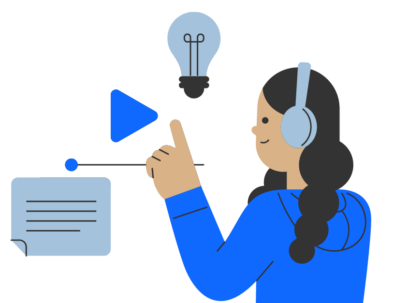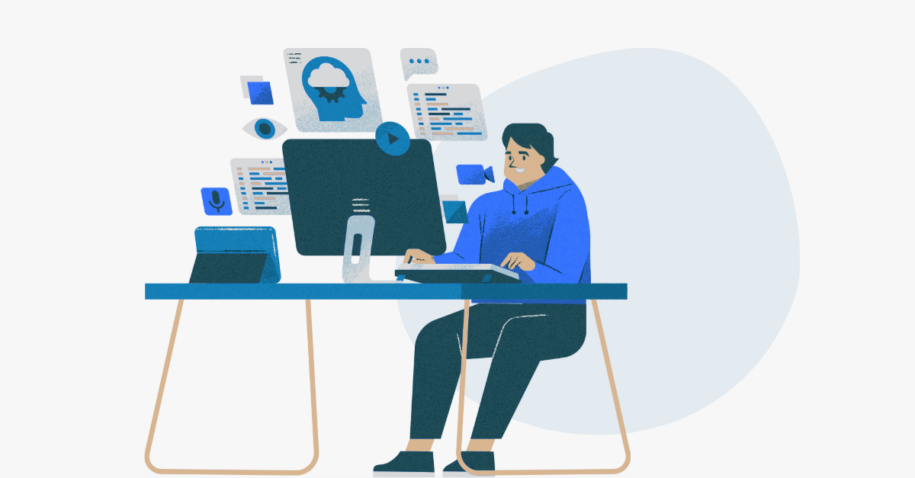What are the advantages and disadvantages of e-learning for your company?
E-learning has revolutionized the world of education and vocational training. By offering unprecedented flexibility, it enables learners to take courses at their own pace and from anywhere. However, this method also has its drawbacks, which are important to consider. So what are the advantages and disadvantages of e-learning? Your questions are answered below.

What are the advantages of e-learning?
First point: flexibility and accessibility
One of the main advantages of e-learning is its flexibility. Learners can access courses at any time and from anywhere, as long as they have an Internet connection. This is particularly beneficial for those with busy schedules or personal commitments that make it difficult to attend face-to-face courses.
E-learning: a good way to cut costs
E-learning can be more cost-effective than traditional methods. It eliminates travel, accommodation and classroom rental costs. What’s more, many online learning resources are free or cheaper than traditional textbooks.
Adaptability to individual needs
E-learning platforms often make it possible to customize learning paths according to learners’ specific needs. This includes the opportunity to review course materials, take practice tests and progress at your own pace.
What are the disadvantages of e-learning?
Isolation and lack of social interaction
One of the major drawbacks of e-learning is the sense of isolation it can engender. Learners do not benefit from face-to-face interaction with teachers and other students, which can limit networking and collaboration opportunities. As Dynamique-Mag points out, “isolation can be a major obstacle to commitment and motivation” (Dynamique-Mag).
Dependence on technology
E-learning relies heavily on technology, which can pose technical problems. Network failures, software compatibility problems and difficulties using platforms can hamper learning. “Dependence on technology can become a brake if the tools are not reliable or adapted” (E-marketing.fr).
Self-discipline and time management
E-learning requires self-discipline and good time management. Learners need to be able to stay motivated and organize themselves effectively without the structure of a traditional classroom environment. For some, this can represent a significant challenge.
Summary table of the advantages and disadvantages of e-learning :
Advantages : |
|
Disadvantages : |
|
How to maximize the benefits of e-learning?
Choosing the right platform
The choice of e-learning platform is crucial to ensure a positive learning experience. It’s important to select a platform that offers an intuitive user interface, high-quality learning resources and reliable technical support. Companies and educational institutions need to invest in well-designed, regularly updated platforms.
Encouraging interaction and collaboration
To reduce feelings of isolation, it’s essential to create opportunities for interaction and collaboration. This can include discussion forums, live webinar sessions and group work. Regular interaction with teachers and other learners can boost commitment and motivation.
Encouraging time management and self-discipline
To overcome the challenges of time management and self-discipline, it is useful to provide tools and advice on time management. Specific training modules on planning, goal-setting and priority management can help learners stay on track.
How to overcome the disadvantages of e-learning?
Offer technical support
To alleviate technical problems, it’s crucial to offer robust technical support. Learners must have access to assistance in the event of difficulty with the platform or the tools used. This can include an online helpdesk, tutorials and detailed FAQs.
Create a community of learners
Encouraging learners to form communities can help combat feelings of isolation. Online study groups, social networks and forums can provide spaces for sharing and discussion, fostering a sense of belonging and mutual support.
Structure your content in an engaging way
To maintain learners’ interest, it’s important to structure content in an engaging way. This can include interactive videos, quizzes, simulations and other multimedia elements. Varied, interactive content can make learning more dynamic and captivating.
E-learning offers many advantages, including flexibility, cost reduction and adaptability. However, it also has its drawbacks, such as isolation, dependence on technology and the need for a high degree of self-discipline. By choosing the right platforms, encouraging interaction and providing adequate technical support, organizations can maximize the benefits of e-learning and minimize its drawbacks. Ultimately, e-learning is a powerful solution that, when properly implemented, can transform learning and professional development.
By adopting effective strategies to maximize the benefits and overcome the challenges, e-learning can deliver an enriching and productive learning experience.
Good to know! quarksUp is an HRIS solution for managing the entire employee cycle.
Thanks to this HR tool, everything can be done online. As an HR manager, you’ll be in charge of all our employees’ digital activities. With its modular offer, quarksUp intervenes from recruitment to employee off-boarding.
You may also be interested in 😊

GPEC: Definition and implementation tools
What is GPEC (Gestion Prévisionnelle des Emplois et des Compétences) and how can it be implemented? quarksUp, expert in HRIS, answers your questions.

Annual appraisal interview: objective, grid
The annual appraisal interview is an opportunity to take stock of performance. quarksUp, expert in HRIS, guides you in preparing your objectives and evaluation grids.

